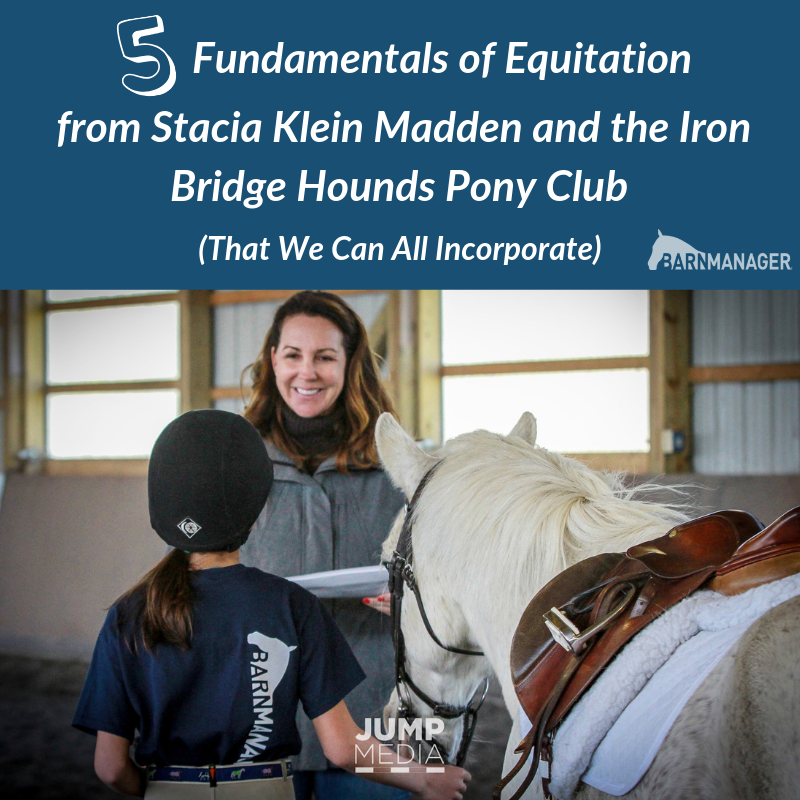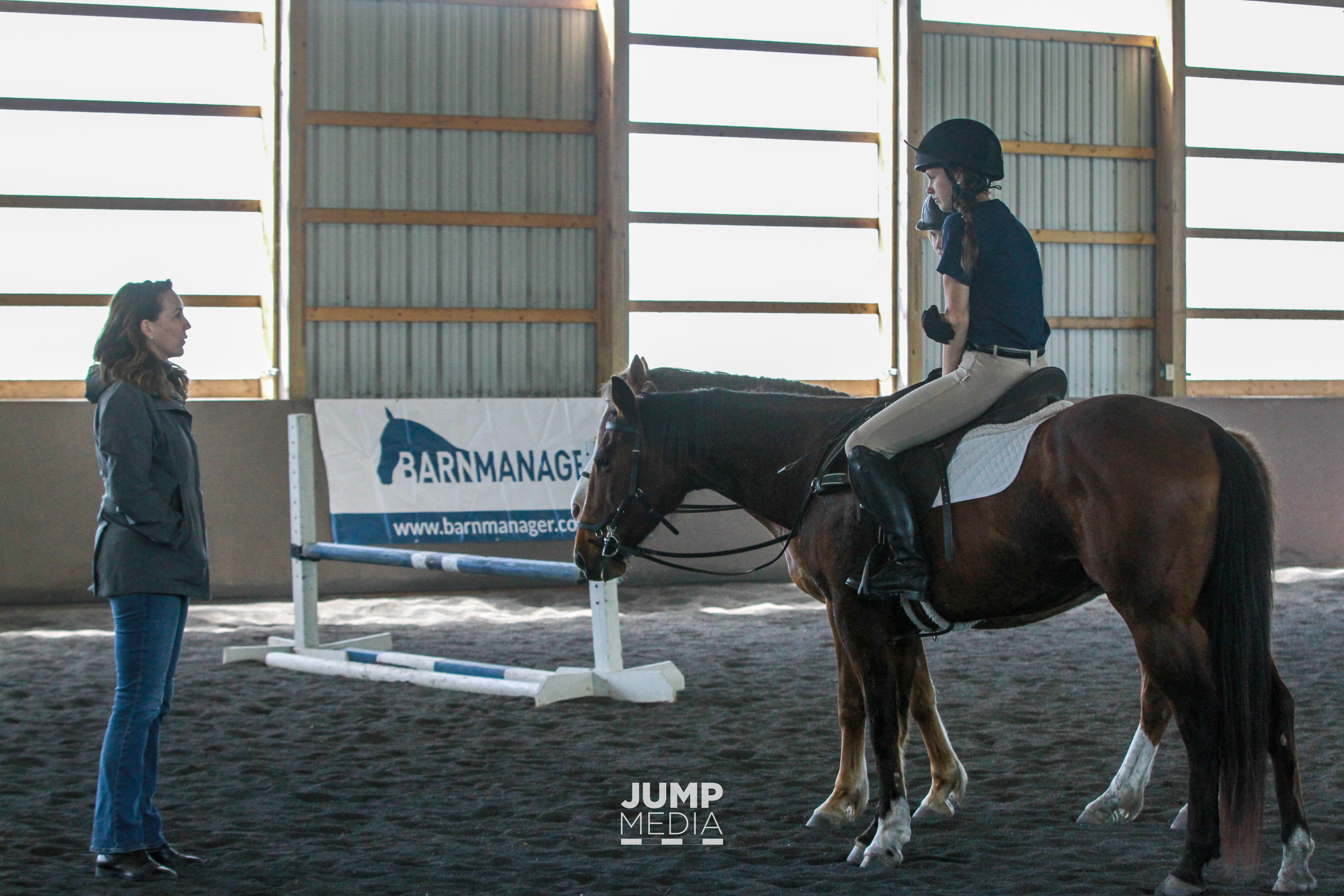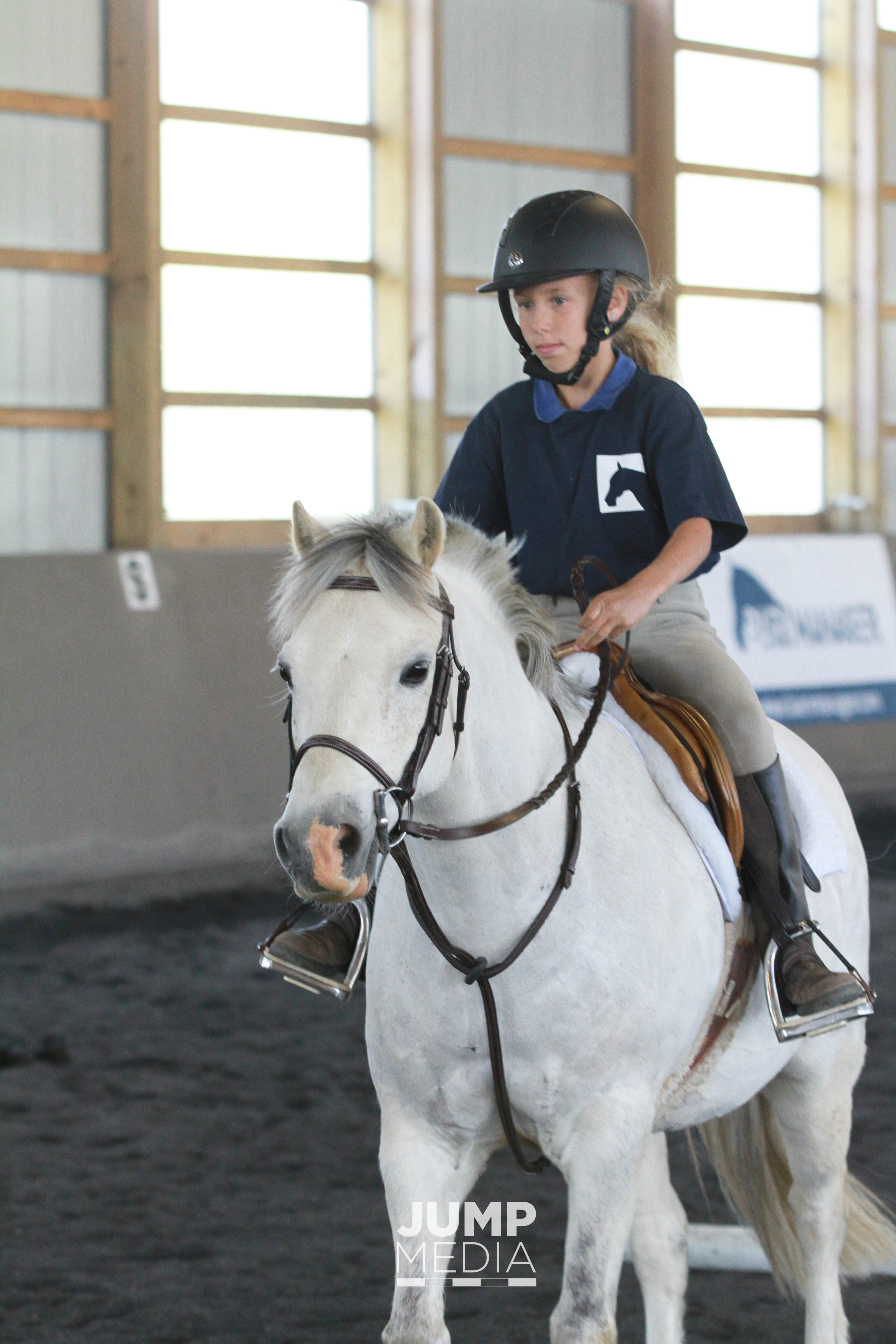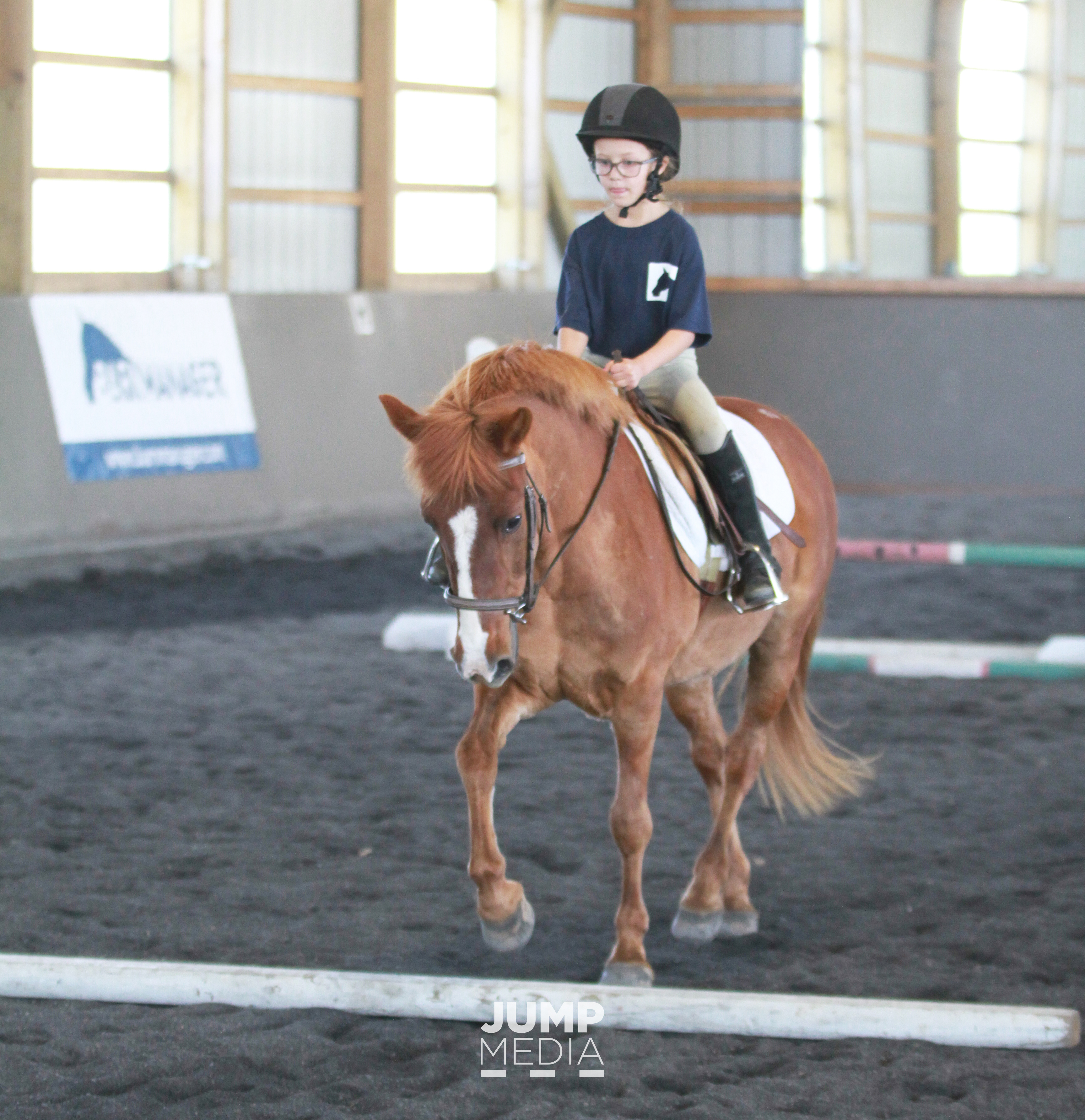-
Pingback: Barn Manager – How YouTube, WIHS, BarnManager, and Stacia Madden Gave Two Sisters a Dream Weekend!
-
Pingback: Barn Manager – Our 10 Most Popular Blog Posts of 2019

Five Fundamentals of Equitation from Stacia Klein Madden and the Iron Bridge Hounds Pony Club
Stacia Klein Madden can typically be found ringside during major equitation classes at top horse shows across the country or at home at Beacon Hill Show Stables training some of the country’s most competitive junior and amateur hunter, jumper, and equitation riders.
Two weeks ago, however, our BarnManager team found Madden somewhere a little bit different: in Maryland amidst 11 young U.S. Pony Club riders and their adorable, fuzzy ponies and well-schooled mounts.
The riders – ranging in age from seven to 16 and in skill level from walk-trot to those competent at jumping three feet – generally focus on dressage, eventing, and beginning show jumping in their lessons, but Madden’s presence meant something different for them as well: a special clinic with a focus on the “Fundamentals of Equitation.”

The clinic was awarded to the riders as the winners of the 2018 Washington International Horse Show (WIHS) Barn Night Group Video Contest, presented by BarnManager, thanks to this winning entry!
This year marked our BarnManager team’s second year in a row partnering with WIHS to put on the clinic, and for the second year in a row, we walked away having gained valuable insight! (Read about last year’s clinic with Laura Graves here.)
With Madden, the emphasis on equitation provided the participating riders – and us! – with tips and reminders that can be beneficial to riding across disciplines – and across all skill levels.
While using the full ring properly in your hunter or equitation class or halting squarely in a straight line after a fence in your lesson may not be exercises you need to work on, it never hurts to revisit the fundamentals!
In fact Madden herself said, “The basics are the same, whether you’re teaching somebody to be on a horse for the first time, or whether you’re trying to win a national championship. It’s just levels and degrees of what you’re trying to fine-tune. Having taught these levels might inspire me to go back to some very simple things with my students at home when I teach this week!”
Here are five of our favorite fundamental reminders from the clinic with Madden:
1) Always remember that you are the pilot – not the passenger!
Ensuring that the rider had full control of the horse was an over-arching theme of Madden’s for the clinic, no matter what level the rider was.
“Air Force One is the most technologically advanced airplane in the world, but it can’t fly itself! It still needs a pilot,” Madden said. “Think of your horse as the plane, and you as the pilot. No matter what kind of horse it is, you have to fly the plane. If they want to go off the course you planned, you have to correct it.”
2) Don’t allow repeat disobediences from your horse, but tailor your correction to the crime.

As the pilot of your horse, you should expect the horse to go where you direct them to go and do what you have asked them to do. When they don’t, it’simportant to correct them properly the first time and not continue to let the disobedience go on or even build into a greater problem.
In the IBHPC clinic, Charlie Atkinson had a good ride in her session on the pony, Emmie, but the chestnut mare had a habit of rooting the reins in a quick motion, pulling Atkinson out of the tack.
Madden showed Atkinson how to quickly set her hands to prevent the rooting as well as teaching her the proper timing for the correction. “When you feel her neck tense and her head go up a bit, get ready, because that’s what she does before she roots down,” Madden advised Atkinson. By the end of the session, Atkinson had a feel for the timing and correction, and Emmie had stopped rooting at the reins both while moving and in downward transitions.
There is a difference in the type of correction a horse may need, however.
“There’s a difference between a horse that stops and a horse that ducks out, and you correct them differently,” Madden said. “A horse that stops is one who loses momentum on the approach to the jump and stops straight right in front of the jump. A horse that ducks out is one that keeps his momentum but turns away from the jump.
“When the horse stops, you need to correct the loss of momentum, so you circle right away, and use your stick behind your leg to get the horse going forward,” continued Madden. “Ducking out is a steering problem, so to correct it you need to turn the horse the opposite way that he went past the jump, then re-approach.”
3) Utilize a three-second rule when it comes to your transitions.
Young Pony Club rider Penelope Roesler had only been riding Fleetwood Mac for a short time before the clinic after transitioning from a pony, and at the beginning of her session, Fleetwood Mac was a bit sluggish off of her leg aids.
Madden taught Roesler how to use the crop behind her leg to reinforce the leg aid and increase Fleetwood Mac’s sensitivity to the leg, and she instituted a “three-second rule” for her transitions, calling out a new gait then counting aloud to three to encourage Roesler to get a prompt transition. The improvement in Fleetwood Mac’s responsiveness was dramatic, and by the end of her session, Roesler was cantering a small course on him.
Particularly when schooling or hacking solo at home, if you have a sluggish horse, it can be easy to get lazy yourself and give your horse a little extra time to accelerate, or, on the opposite end of the spectrum, a little extra time to decelerate! It never hurts to remember to be crisp and timely in your transitions.
4) Incorporate ground rails into your routine.
 Madden incorporated rails on the ground before jumping for each one of the groups. “You can get a lot done with rails on the ground. You want your horse to have a long, healthy career,” she said.
Madden incorporated rails on the ground before jumping for each one of the groups. “You can get a lot done with rails on the ground. You want your horse to have a long, healthy career,” she said.
“I have multiple horses in my barn in their 20s, still sound and showing. You do that by saving their legs and not always jumping. You can keep a horse pretty fit over cavaletti, and they’re a great way to work on riders’ skills as well. Cavaletti work prepares you for jumping and gives you the skills to be ready to jump. There are a gazillion things you can do over cavaletti. Get creative with them and figure out what would help you and your horse.”
5) Be thankful for the opportunity that you have to ride in any capacity and enjoy it!
Maybe it was the way they carefully groomed their ponies, brushed out their tails, and showed their mounts how much they appreciated them, or maybe it was the way you could almost see each of them taking in and absorbing everything that Madden said and truly valuing her expertise, but watching the Iron Bridge Hounds Pony Club riders was a valuable reminder of what it looks to really be thankful for this incredible privilege that we have of riding and working with horses.
No matter what your discipline or riding level, I think we can all agree that love and appreciation of the horse is the most important fundamental of all.